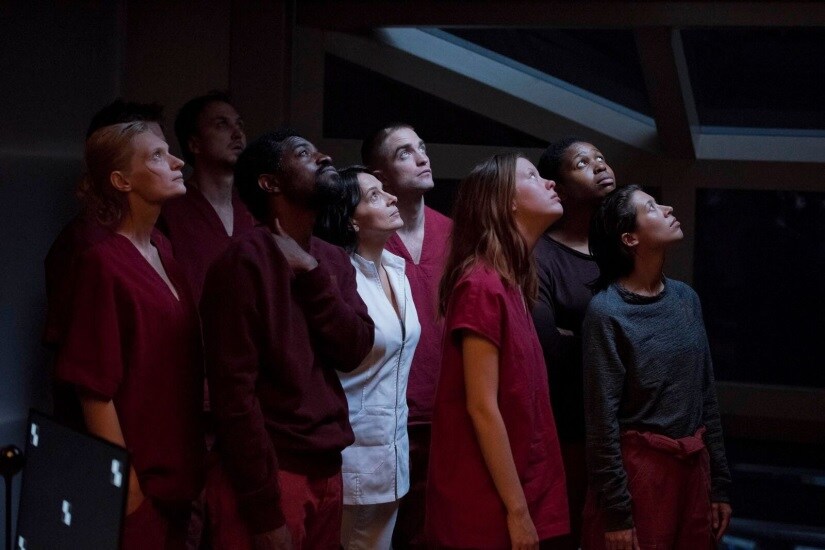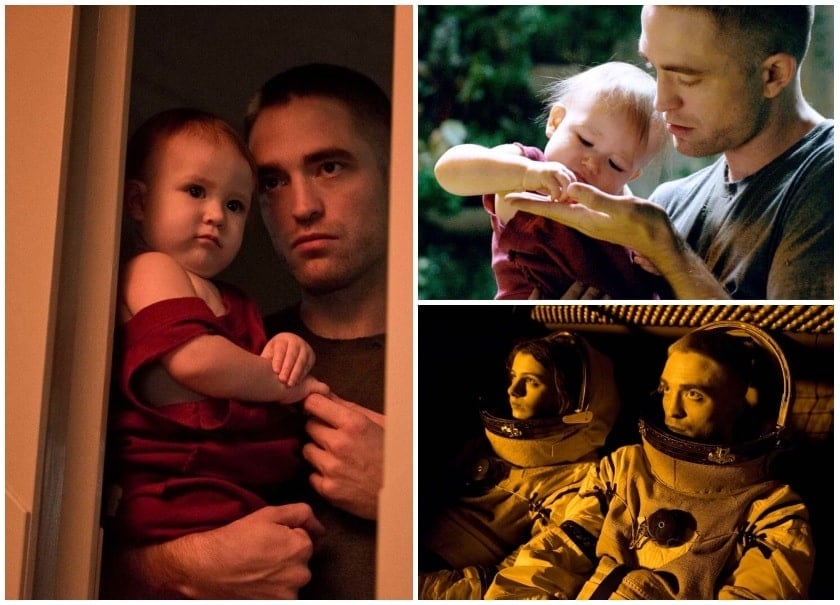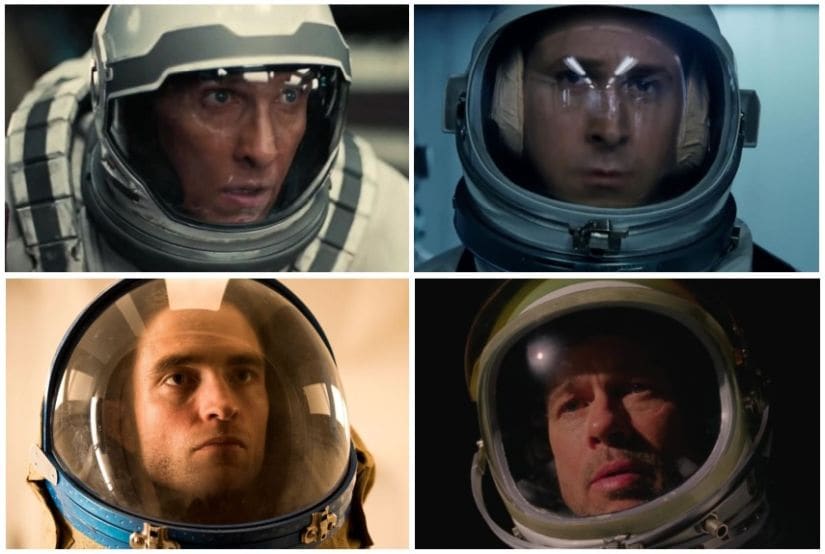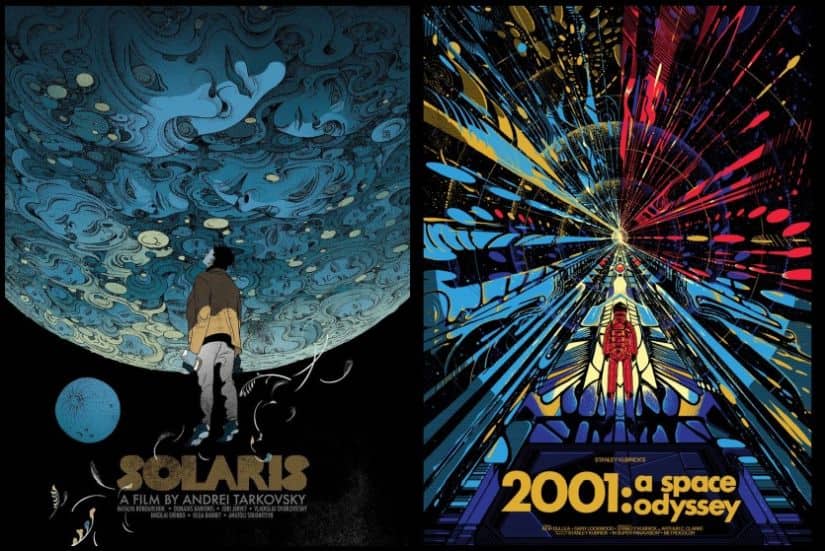The longest journey is not into the unknown or unknowable outer space but the journey inward into the unconscious. From 2001: A Space Odyssey to _Ad Astra_ and every interstellar journey in between, this idea has repeated itself in the stories imagined by filmmakers who have often used space as a backdrop to explore uncharted territories of our inner selves. Space travel dramas play the role of a mediator between science and imagination in humanity’s quest into the unknown or as an escape from our human limitations. Some films (like 2001: A Space Odyssey and Solaris) launch us into the cold, dark depths of space, leaving us to contemplate the future of humanity and/or the nature of reality. Others (like _Gravity_ and _The Martian_ ) are more straightforward: a celebration of homecoming and the triumph of human spirit against astronomical odds. Claire Denis’ High Life and James Gray’s Ad Astra, both of which released earlier this year, exist somewhere closer to the former than the latter on this continuum. But they all use science fiction concepts to tell fundamentally human stories. [caption id=“attachment_7672851” align=“alignnone” width=“825”]  Stills from Ad Astra | 20th Century Fox[/caption] Like most space dramas before them, the shadows of Stanley Kubrick’s 2001: A Space Odyssey and Andrei Tarkovsky’s Solaris loom large over High Life and Ad Astra. Though these films come from four singular filmmakers of two different eras using similar settings for dissimilar pay-offs, they all put you under a contemplative spell with their techno-poetic visuals — dazzling both the mind and the senses in equal measure. Ad Astra continues 2001’s corporate conquest of the cosmos in a story centred on astronaut Roy McBride (Brad Pitt) and his mission to the edge of the solar system, where his father Clifford (Tommy Lee Jones) led a journey to Neptune thirty years ago in search of extra-terrestrial intelligence. Cliff turned into a myth and mystery himself — like the extra-terrestrials — after his disappearance and presumed death, and his abandoned son follows in his footsteps in hopes of reuniting and reconnecting with him. High Life opens with a tender preamble to a more loving paternal relationship as Monte (Robert Pattinson) takes care of his infant daughter Willow in a decrepit spaceship seemingly drifting to nowhere. Through flashback, we learn that the spaceship is actually a prison for death row convicts, who are on a one-way mission to investigate a distant black hole. The spaceship also becomes a site for some disturbing experiments on these criminals as Dr Dibs (Juliette Binoche) — a scientist and warden of sorts — attempts to harvest healthy foetuses through artificial insemination. But these experiments have fatal consequences leaving Monte and his daughter as the only surviving inhabitants. So, we see him perform daily maintenance tasks, grow food in the lush greenhouse, and log entries into the mainframe to keep the ship’s self-sustaining life support system functional. [caption id=“attachment_7672991” align=“alignnone” width=“825”]  Prisoners serve out their life sentences on a spaceship in High Life | A24[/caption] Ad Astra begins in a more exciting fashion, akin to Gravity’s space debris sequence, as Pitt’s character fixes the antenna on a space station extending into Earth’s upper atmosphere. When a power surge triggers a CGI chain-reaction of collisions, he nearly falls to his death from outer space — and this is heart-poundingly captured by spinning, free-falling camera movement. Humanity in Ad Astra and High Life, unlike in 2001, don’t treat space and time as mere terrains for conquest or as a larger journey towards evolution, but as a path to a new home before Earth’s resources are exhausted. Similar to Christopher Nolan’s Interstellar, the characters in High Life are also headed on an ambitious expedition to a black hole in search of a habitable planet but it is the father-daughter relationship that forms the film’s emotional core. Ad Astra also mirrors Interstellar in many ways: Matthew McConaughey and Pitt both play emotionally stunted protagonists; children are left to deal with issues of paternal abandonment; and astronauts prioritise Earth-saving missions to the detriment of interpersonal relationships. However, while Nolan’s story revolves around the father who leaves behind his kid for interstellar travel, Gray focuses Ad Astra on the kid left behind. [caption id=“attachment_7673021” align=“alignnone” width=“840”]  Claire Denis foregrounds a father-daughter relationship in High Life | A24[/caption] Pattinson in High Life and Pitt in Ad Astra, along with Ryan Gosling in First Man, join a new space drama tradition of — what Steph Green rightly calls — Sad Men In Space™. “All three of these characters struggle with the pressures and anxieties of masculinity and patriarchal family dynamics whilst suspended in space,” she elaborates. This sadness is amplified by loneliness and the monotony that comes from a prolonged space mission. This loneliness only becomes crippling in the deafening silence and existential void of space, where our mind becomes a theatre for our worst anxieties, fears and impulses. [caption id=“attachment_7673041” align=“alignnone” width=“825”]  Outer space becomes a therapy couch for Hollywood’s sad astronauts. (Clockwise from top left): Matthew McConaughey in Interstellar, Ryan Gosling in First Man, Brad Pitt in Ad Astra, and Robert Pattinson in High Life.[/caption] In High Life, the spaceship’s empty red-lit corridors add context to Monte’s psychological state as we revisit the past. Though there is no _Solaris-_like sentient ocean that reads people’s minds or materialises their guilt into phantom projections, a similar mood and abstract rationalism persists in Denis’ film. But High Life’s metaphysical concerns are more about sex and survival, less about the subjectivity of memories or limitations of human perception. On board the spaceship, sex is not the ultimate expression of emotional intimacy, but a mere exchange of bodily fluids. Masturbation becomes ritual protocol in a device called the “fuckbox” as Binoche’s Dibs treats the inmates like walking procreation tools for her experiment. So, they are not just prisoners of society, but also of biology. In a prison structure where entropy reigns supreme, the body thus becomes a canvas of abuse and violence. Denis gives a palpable physicality to human fragility with the use of blood, sweat, tears and semen. Some deaths are bloodier than others: Mia Goth’s Boyse is ripped apart due to spaghettification as she passes through a black hole. You see the sweat dripping when the inmates exercise, or even when Monte labours to dispose the heavier lifeless bodies into space. [caption id=“attachment_7673031” align=“alignnone” width=“825”]  Every modern space epic has invariably drawn comparisons to Andrei Tarkovsky’s Solaris and Stanley Kubrick’s 2001: A Space Odyssey.[/caption] The extreme isolation of space travel takes a more emotional, less biological, toll on Roy in Ad Astra. It not only renders him emotionally unavailable to his wife, it breeds a neglect for his fellow crew members on board. Like his father, his obsession eventually — even if unintentionally — causes their deaths. Only after confronting his dad and working through his daddy issues, he realises what really matters — and the answer to his loneliness — is back home with his wife, not in outer space. Humanity’s saving grace lies in our interpersonal relationships and familial bonds. If Gray spells out Ad Astra’s ideas through Tree of Life-like voice-over narration and Interstellar-like expository dialogue, Denis is happy explaining nothing in High Life and leaving room for interpretation. Though both films end in opposite directions of the universe, the journey at the heart of the films is not one about unravelling the mysteries of the cosmos, but an introspective one on what grounds us to our own world. As Nolan once said about Interstellar, “what it always comes back to is the essential idea that the farther we go into space, the more it becomes about who we are and what it is to be human.”
The journey at the heart of Ad Astra and High Life is not one about unravelling the mysteries of the cosmos, but an introspective one on what grounds us to our own world.
Advertisement
End of Article


)
)
)
)
)
)
)
)
)



